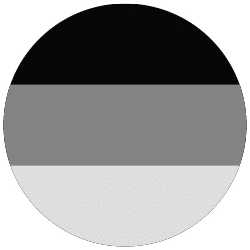Foam Cleaning
1. Pre-work/Floor scraping
Premises to be cleaned with chemicals must be emptied of unpackaged food. This is prescribed in the Food Act. Empty the premises on, for example, racks, slopes, trolleys and pallets that are not to be cleaned on site. Continued work is greatly facilitated if cleaning can be performed on as free surfaces as possible. Moisture sensitive production equipment is covered with plastic. The plastic is removed after cleaning. Cartons and other packaging, labels and such, is placed in the intended place or covered before cleaning. Scrape together and pick up the product residue from the floor.
2. Pre rinse
Pre-rinse with pre-rinse nozzle or blue nozzle. The water temperature should not exceed 40 ° C so that the protein residues (egg whites) do not coagulate (burn) and thus make further cleaning difficult. Pre-rinsing is only done to remove serious contamination and to loosen up the cleaning surface.
3. Floor Scraping
Product residues, etc. that are now on the floor are gathered together with a strong rubber scraper. Never scrape or flush any contaminants into the floor wells or drains.
4. Application of Foam
If detergent is applied in the form of foam, the foam must have such stability (adhesion) that it remains for a certain time on vertical surfaces. The foam is applied with a white nozzle. Do not put foam on too large or too many surfaces at one time, as the foam dries. When applying foam on vertical surfaces, the foam should be applied from the bottom up. Dosage of detergent must follow given regulations. Overdosing does not facilitate cleaning work, but can in many cases lead to direct negative effects.
5. Duration of chemical action
During the period of action, the dirt is encapsulated and saponified.
6. Main rinse
When rinsing vertical surfaces, rinsing should be done from top to bottom. When rinsing at elevated pressure, the distance between the nozzle and the cleaning object should be relatively short, about 30 cm. The angle of incidence of the water jet towards the cleaning object should be between 45-90 °. Flushing is done with a blue nozzle (long or short). The water temperature is adjusted to the chemical composition of the contaminant and to the detergent used. Normal water temperature is 50 ° C – 60 ° C. All rinsing should be completed within 1 hour after foam application to avoid drying and coating.
7. Desinfection
Disinfection should be done with a yellow nozzle if the application takes place as clear liquid or with a white nozzle if it is applied as foam. In the case of disinfection, it is of the utmost importance that the dosage always follows the given regulations. Normally, only surfaces where contact with open product is disinfected.
8. Final rinse
The statutory provisions stipulate that disinfectant rinsing off must be done before production can start. Rinse with pre-rinse nozzle or blue nozzle.
Keep in mind that:
– the cleaning equipment must also be cleaned using the same method as other equipment.
– care and maintenance of the cleaning equipment must comply with Lagafor’s recommendations.
– cleaned production equipment must not be wiped with ordinary rags or rubber scrapers.
Clean with optimized parameters

Chemistry
Alkaline detergents – with a high pH value have a good effect on fat and protein residues.
Acidic detergents – have a low pH and are effective, for example, against coatings of lime, oxides and rust.
Disinfectant – can be both an alkaline or acidic product and has a killing effect on remaining microorganisms after cleaning.
Combined cleaning and disinfectants – these have some killing effect on microorganisms, but not the same effect as a separate disinfectant.

Temperature
When pre-rinsing, the water temperature should normally be about 40 degrees and at rinsing about 55 degrees. This is achieved through a special pre-rinse nozzle that lowers the temperature during pre-rinse.
Too high temperatures can lead to burning and cause unnecessary costs.
Too low temperatures lead to longer cleaning times and inability to digest fat.

Energy
To replace the mechanical effect of the brush, the water pressure can be raised according to the following table:
5 bar – 50 liter/min
20 bar – 30 liter/min
40 bar – 22 liter/min
80 bar – 18 liter/min
Frequency controlled pumps also provide an energy saving effect.

Time
Time is the biggest cost of external cleaning, about 50%.
If you want to reduce the cost of time, you gain nothing by increasing the amount of water, chemo-dosing or increasing the temperature, you simply redistribute the costs.
To reduce the number of working hours, automation of the cleaning process is very effective.
Another method of reducing the number of working hours is to install dishwashers for eg cutting boards, sideboards and trays.



